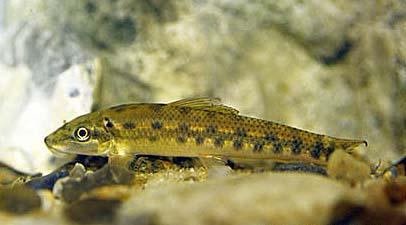Algae Eater - Golden
Scientific Name: Gyrinocheilus aymonieri
Sun, 6th July, 2025 - 2:12 am GMT
Sponsor Ads:

Alternative Name
Scientific Name: Gyrinocheilus aymonieriBasic Info
The Golden Chinese Algae Eater has an average lifespan between 8 and 10 years. The Golden Chinese Algae Eater's light brown body makes it a more exotic choice than the regular Chinese Algae Eater. The Siamese Algae Eater usually has a brown body, with dark brown to gray features. These features can be stripes, spots or both. A few fish will be a pure light yellow color. At maturity, the Algae Eater will reach a size of roughly four to six inches. The largest documented Chinese Algae Eater was 11 inches in length Sucker Fish are tubular, with long narrow bodies. When they are eating algae off the glass, you can see their mouth, which is a round suction device. Males tend to be larger than females and will have larger, warty heads.
Health
Algae Eaters are pretty self-reliant. It is important not to clean the algae in your tank if you have a Sucker Fish, as the algae are their source of food. They like water between 75 and 82 degrees fahrenheit, with a slightly acidic to neutral pH, ranging from 6.2 to 8. They only need to be fed when there are no algae in the tank. If this happens, large quantities of flakes, shrimp pellets and vegetables should be put into the tank. Algae Eaters should not be put into newly established tanks, as there will not yet be any algae present for them to eat. Breeding Do not plan on breeding the Golden Algae Eater. Little is known about their breeding patterns and the two sexes are extremely difficult to distinguish.Habitat
Fresh water fishBehavior
The Golden Chinese Algae Eater is much like the Chinese Algae Eater, but it is albino. They also go by the name of Siamese Algae Eater, Indian Algae Eater or Sucker Fish. Juveniles are extremely useful, as they clean the surfaces in the tank of algae - but adults are not well suited to community tanks. Young Siamese Algae Eaters will fit into most community tanks. They are not overly aggressive. But this is not true for mature species. Mature Chinese algae eaters usually display aggressive behavior towards other species of fish. They are known to harass and terrorize tank mates. They can also attach themselves to the sides of other fish, which can seriously injure the other fish. If this occurs the algae sucker must be removed permanently. As these fish become older they become more and more aggressive. Because they tend to grow rather large, they do much better in a large tank of at least 75-gallons. In addition to displaying aggression towards other species, the mature Algae Eaters will defend their territory - even against other Algae Eaters. Aquariums of a hundred gallons or less should only have one Algae Eater. As far as the aquarium setup, the Sucker Fish is not a fussy fish, but it prefers lots of hiding places, such as rock piles, vegetation and a dimly lit tank. Algae Eaters will spend most of their time on the bottom of the tank, sucking algae of the substrate and rocks.Origin
AsiaHistory
The Chinese Algae Eater is originally from southeast parts of Asia, including India and Thailand.Common Foods
It has been reported that they stop eating algae as they get older, and this defeats the main purpose of having them in aquarium.Sponsor Ads:
"Those who were called skillful leaders of old knew how to drive a wedge between the enemy's front and rear; to prevent co-operation between his large and small divisions; to hinder the good troops from rescuing the bad, the officers from rallying their men." -- Sun Tzu, The Art of War
Algae Eater - Golden
Coded by: BGID® | ALL RIGHTS RESERVED Copyright © 2000-2025
Disclaimer | Privacy | Report Errors / Contact | Credits








 Why haven't we as a collective earth met with aliens yet?
Why haven't we as a collective earth met with aliens yet?  World EcoSystem - Biodiversity Changes - Who is on board and who isn
World EcoSystem - Biodiversity Changes - Who is on board and who isn  Homosexual behavior stems from the mind or genetics?
Homosexual behavior stems from the mind or genetics?  The Best Text Adventure You Will Ever Play! The official site:
The Best Text Adventure You Will Ever Play! The official site:  Mouthwash - Mouthrinse - Mouth Sores - Healing Infections - Gingivitis
Mouthwash - Mouthrinse - Mouth Sores - Healing Infections - Gingivitis  Treatment for Depression
Treatment for Depression  Ultra radical and violent Islamist group that even rivals Al Qaeda
Ultra radical and violent Islamist group that even rivals Al Qaeda  An idea to have teachers who want to carry guns to school undergo some level of police training will be left up to local school districts and police departments.
An idea to have teachers who want to carry guns to school undergo some level of police training will be left up to local school districts and police departments.